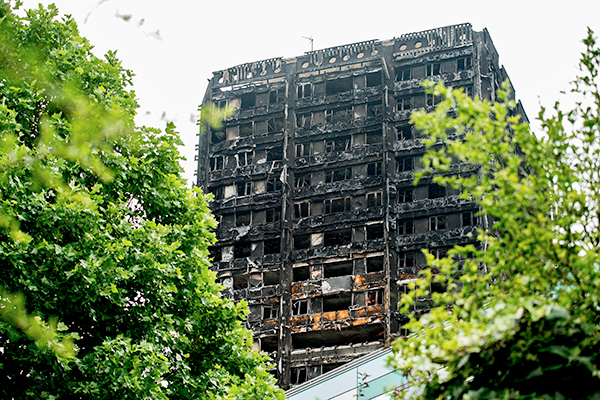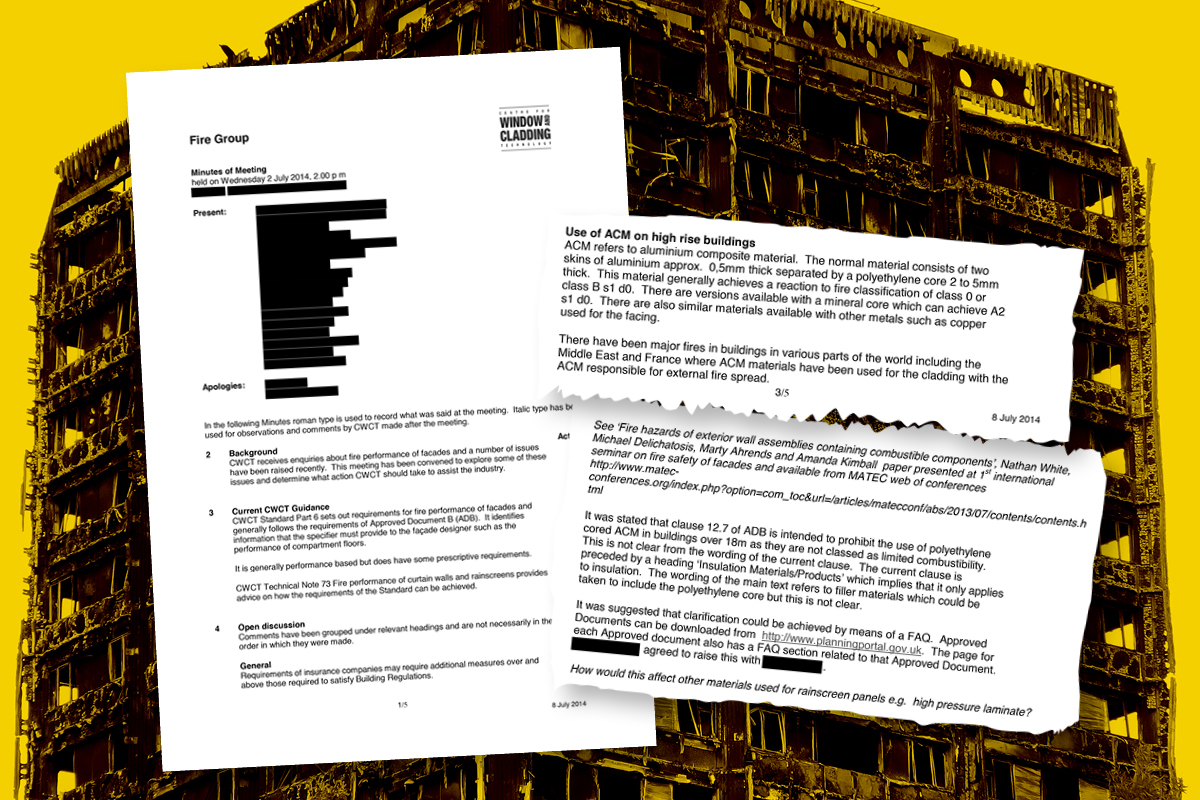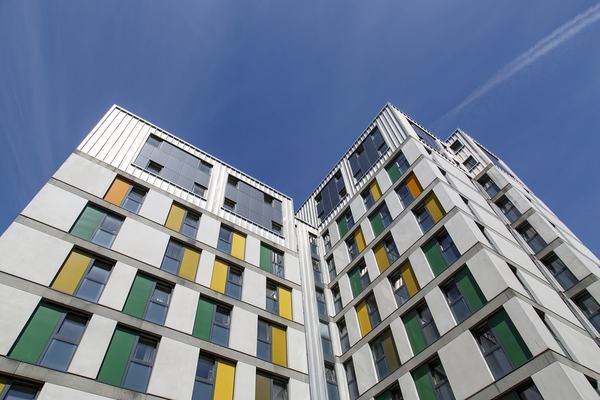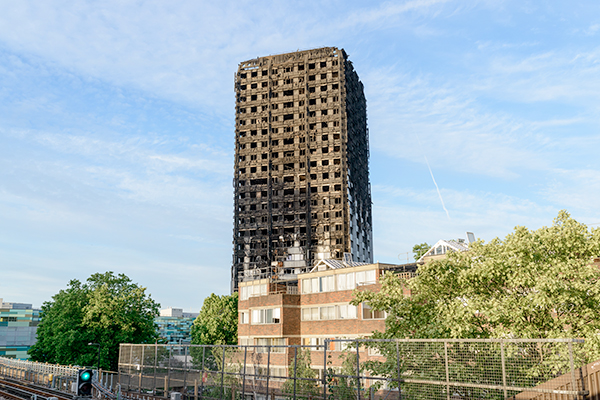You are viewing 1 of your 1 free articles
Morning Briefing: papers cover missed Grenfell warning
Papers follow up Inside Housing’s report on a missed warning about Grenfell-style cladding, and the rest of the morning’s housing news
In the news
Inside Housing’s revelation yesterday that ministers were warned about Grenfell-style cladding in 2014 has caught the attention of the national media, with The Times and The Mirror running follow-up stories. It was also broadcasted last night in a Channel 4 News bulletin.
You can read our exclusive report here.
In other Grenfell related news, the police have released the tower to the control of the government after completing their investigations.
In Cardiff, flat owners are warning they are unable to sell their homes because of the Grenfell-style cladding installed on the outside.
The government has published an advice note for building owners affected by the emerging crisis over lower than standard fire doors.
And rounding up the latest Grenfell-related coverage, the Financial Times has a scoop which reveals the government has requested figures from the Financial Conduct Authority to assess whether private owners will be able to afford to pay for the removal of cladding from their blocks.
Elsewhere, the BBC has a slightly odd report about councils in the South of England selling homes under the Right to Buy. It reports the figures – which it had received through the Freedom of Information Act – show Southampton is selling homes at the fastest rate.
These statistics are released quarterly – available here – and show many councils have sold more than Southampton.
In finance news, interest rates went up yesterday from 0.5% to 0.75% which will impact millions of mortgage borrowers.
The Guardian has the latest on Serco’s bid to evict asylum seekers from flats in Glasgow.
On social media
Aileen Evans wants you to be more giraffe, apparently:
I’m a big fan of the work being done to engage with younger members (and would be members) by @Cihfutures. As a coach, I’ve been active in supporting people across the sector with their development. I would promote the role CIH play in supporting this.#bemoregiraffe #CIHVP18 pic.twitter.com/yklQ9GUqdD
— Aileen Evans (@Bushbell)I’m a big fan of the work being done to engage with younger members (and would be members) by @Cihfutures. As a coach, I’ve been active in supporting people across the sector with their development. I would promote the role CIH play in supporting this.#bemoregiraffe #CIHVP18 pic.twitter.com/yklQ9GUqdD
— Aileen Evans (@Bushbell) August 3, 2018
And G15 boss Paul Hackett has a warning about the cross-subsidy in London following our story earlier in the week:
The housing association cross-subsidy model is at full stretch. Increasing supply at existing grant rates isn’t feasible. Higher grant per home is needed to achieve the increase in #SocialRent and #AffordableRented homes the country needs. #ukhousing t.co/Lf5x8yX4B4
— Paul Hackett (@PaulHackett10)The housing association cross-subsidy model is at full stretch. Increasing supply at existing grant rates isn’t feasible. Higher grant per home is needed to achieve the increase in #SocialRent and #AffordableRented homes the country needs. #ukhousing https://t.co/Lf5x8yX4B4
— Paul Hackett (@PaulHackett10) August 2, 2018
Timeline: a short history of cladding and building regulations
- January 2000 - Following the tower block fire at Garnock Court - which killed a pensioner with disabilities - a report by the Environment, Transport and Regional Affairs Committee concluded that building regulations required "external surfaces (and hence cladding)... should be of a material classified as 'Class O' for spread of fire". It adds: "We do not believe that it should take a serious fire in which many people are killed before all reasonable steps are taken towards minimising the risks [from cladding fires]."
- January 2008 - The British Board of Agrément provides a certificate confirming a Class 0 rating for Reynobond PE, the material later installed on Grenfell Tower
- March 2013 - The coroner investigating the Lakanal House blaze in south London, which killed six, writes to Eric Pickles, communities secretary, advising him to review official guidance contained in Approved Document B "with particular regard to the spread of fire over the external envelope of a building". Mr Pickles replies, indicating that changes will not made until "2016/17"
- July 2014 - At a meeting of the Centre for Window and Cladding Technology, the government is warned that its guidance is not clear enough to prohibit the use of aluminium composite cladding with a polyethylene core (ACM(PE)) on tall buildings, which has been linked to a number of fires worldwide. The Building Research Establishment agrees to draft an 'FAQ' making it clear that this material is prohibited, but never does.
- 14 June 2017 - A kitchen fire at Grenfell Tower, west London, spreads to the recently installed ACM(PE) cladding. The resulting fire totally engulfs the building, trapping residents and killing 72 people.
- 22 June 2017 - The government writes to social landlords claiming ACM(PE) is banned by guidance, despite its failure to clarify this point before the fire. Philip Hammond, chancellor, repeats this claim on the BBC's Andrew Marr Show.
- 17 May 2018 - The government announces plans to ban combustible materials on high rises buildings, and later publishes draft 'clarified' guidance, removing the passage which had been interpretted as permitting 'Class 0' cladding.
The Paper Trail: The Failure of Building Regulations
Read our in-depth investigation into how building regulations have changed over time and how this may have contributed to the Grenfell Tower fire:
The ‘Class 0’ debate explained
- Since the Grenfell Tower fire, the government has insisted that its official guidance, Approved Document B, required cladding panels to be of ‘limited combustibility’. But many industry figures disagree, saying that the standard the guidance set was ‘Class 0’ or ‘Euroclass B’.
- Approved Document B sets limited combustibility as the standard for ‘insulation materials/products’ in paragraph 12.7. It sets Class 0 or Euroclass B as the standard for ‘external surfaces’ in paragraph 12.6.
- Paragraph 12.7 says that “insulation product, filler material etc” must be of limited combustibility. In a letter to social landlords on 22 June, the government said that the word ‘filler’ in this context covered the plastic in between the aluminium sheets in the cladding.
- But experts have disputed this view, pointing out that the cladding itself does not have an insulation function.
- The cladding used on Grenfell was certified to Class 0 and so would apparently have met the official standard for external walls.
- This debate remains crucial in assessing the liability for the removal of cladding, much of which is also rated Class 0, from hundreds of tower blocks nationwide.
What are desktop studies, and why are people concerned?
Building regulations say cladding systems which contain combustible insulation must be shown to meet specific standards based on “full scale test data”
A ‘desktop study’ is a means of making an assumption about whether or not a cladding system would meet these standards without actually testing it.
It involves using data from previous tests of the materials in different combinations to make assumptions about how it would perform in a test.
This is not specifically provided for in the current guide to building regulations, but the government believes they are loosely drafted to an extent which makes it permissible. It plans to redraft the guidance to include specific rules on the use of desktop studies for the first time.
The alternatives to a desktop study are full scale testing or not using combustible materials.
People are concerned about the process because it is based on assumption: at least one system cleared through a desktop study has failed a full scale test.
This is important for fire safety because mistakes may mean unsafe cladding systems being cleared for use on tall buildings.
Never Again campaign
In the days following the Grenfell Tower fire on 14 June 2017, Inside Housing launched the Never Again campaign to call for immediate action to implement the learning from the Lakanal House fire, and a commitment to act – without delay – on learning from the Grenfell Tower tragedy as it becomes available.
One year on, we have extended the campaign asks in the light of information that has emerged since.
Here are our updated asks:
GOVERNMENT
- Act on the recommendations from Dame Judith Hackitt’s review of building regulations to tower blocks of 18m and higher. Commit to producing a timetable for implementation by autumn 2018, setting out how recommendations that don’t require legislative change can be taken forward without delay
- Follow through on commitments to fully ban combustible materials on high-rise buildings
- Unequivocally ban desktop studies
- Review recommendations and advice given to ministers after the Lakanal House fire and implement necessary changes
- Publish details of all tower blocks with dangerous cladding, insulation and/or external panels and commit to a timeline for remedial works. Provide necessary guidance to landlords to ensure that removal work can begin on all affected private and social residential blocks by the end of 2018. Complete quarterly follow-up checks to ensure that remedial work is completed to the required standard. Checks should not cease until all work is completed.
- Stand by the prime minister’s commitment to fully fund the removal of dangerous cladding
- Fund the retrofitting of sprinkler systems in all tower blocks across the UK (except where there are specific structural reasons not to do so)
- Explore options for requiring remedial works on affected private sector residential tower blocks
LOCAL GOVERNMENT
- Take immediate action to identify privately owned residential tower blocks so that cladding and external panels can be checked
LANDLORDS
- Publish details of the combinations of insulations and cladding materials for all high rise blocks
- Commit to ensuring that removal work begins on all blocks with dangerous materials by the end of 2018 upon receipt of guidance from government
- Publish current fire risk assessments for all high rise blocks (the Information Commissioner has required councils to publish and recommended that housing associations should do the same). Work with peers to share learning from assessments and improve and clarify the risk assessment model.
- Commit to renewing assessments annually and after major repair or cladding work is carried out. Ensure assessments consider the external features of blocks. Always use an appropriate, qualified expert to conduct assessments.
- Review and update evacuation policies and ‘stay put’ advice in the light of risk assessments, and communicate clearly to residents
- Adopt Dame Judith Hackitt’s recommended approach for listening to and addressing tenants’ concerns, with immediate effect
CURRENT SIGNATORIES:
- Chartered Institute of Housing
- G15
- National Federation of ALMOs
- National Housing Federation
- Placeshapers














